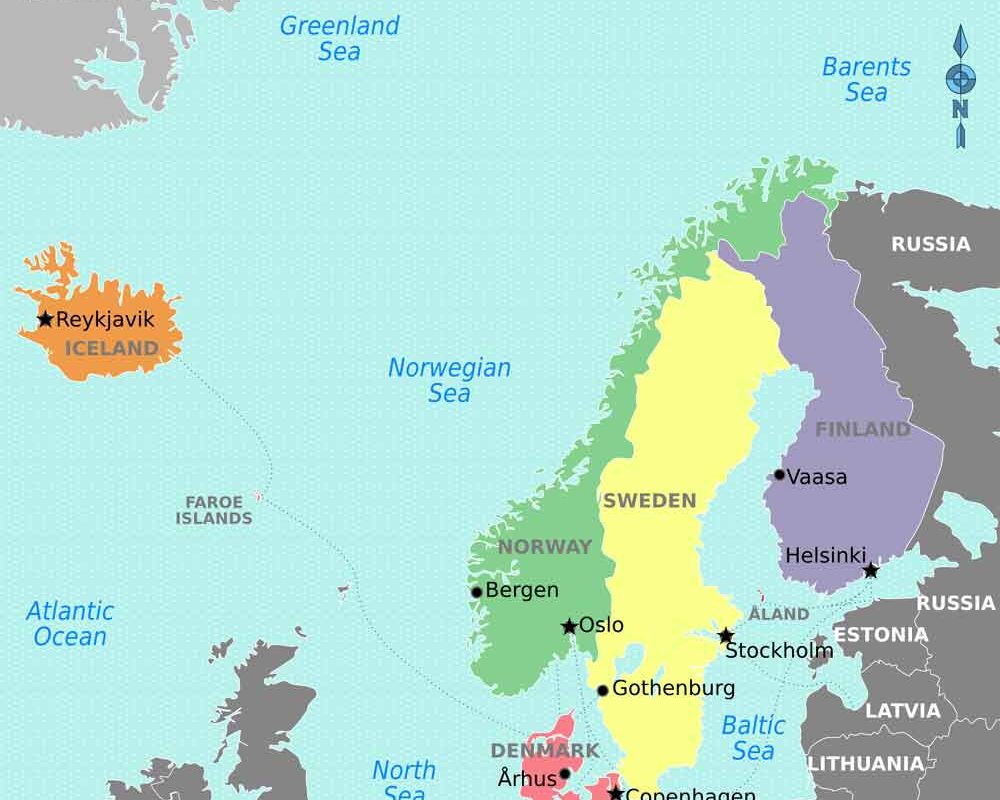The term “Scandinavia” extends beyond a mere geographical reference, resonating with the echoes of shared histories, linguistic unity, and a cultural tapestry woven from the vibrant threads of Denmark, Norway, Sweden, Scandinavian countries, facts and flags, and the encompassing regions that collectively define this captivating subregion in Northern Europe. The Scandinavian linguistic continuum, intricately entwined with cultural and geographical nuances, paints a portrait of linguistic diversity that transcends conventional boundaries. The terminology adds a layer of complexity, showcasing the dynamic interplay between precision and flexibility within the realm of language.
Historical and Cultural Roots of Scandinavian Countries
Scandinavia, a distinctive subregion nestled in the northern expanse of Europe, boasts a rich tapestry woven from historical, cultural, and linguistic threads. This geographical enclave predominantly encompasses three sovereign kingdoms: Denmark, Norway, and Sweden. The roots of Scandinavia delve deep into an intricate web of shared histories, traditions, and linguistic nuances, forming an indelible connection among its denizens.
The linguistic fabric of Scandinavia is interwoven with the Scandinavian dialect continuum, encompassing the national languages of Denmark, Norway, and Sweden. These languages, categorized as North Germanic, display a fascinating mutual intelligibility, fostering a linguistic unity that echoes the historical ties binding the region together.
Diversity in Interpretation: A Linguistic Perspective
Within the confines of the English lexicon, the term “Scandinavia” takes on a nuanced duality. On one hand, it might denote the specific landmass of the Scandinavian Peninsula, emphasizing a geographical expanse that unites the three aforementioned kingdoms. On the other hand, in a broader sense, Scandinavian countries, facts, and flags “Scandinavia” extends its embrace to encompass a more extensive collective. This broader interpretation encompasses not only the Åland Islands and the Faroe Islands but also extends its reach to Finland and Iceland, enveloping these diverse locales within its cultural umbrella.
Geographical Scope: The All-Encompassing Scandinavia
When viewed through the lens of English vernacular, the term “Scandinavia” transcends mere geographical demarcations. It evolves into a comprehensive designation that seeks to encapsulate a vast array of territories and islands. Beyond the core trio of Denmark, Norway, and Sweden, Scandinavia unfolds to include the archipelagic beauty of the Åland Islands, the rugged Faroe Islands, the enigmatic landscapes of Finland, and the otherworldly allure of Iceland. This expansive vision paints Scandinavia as not merely a landmass but a mosaic of diverse regions, each contributing its unique hues to the overall cultural canvas.
List of Mainland Scandinavian countries
- Denmark (constitutional monarchy with a parliamentary system)
- Norway (constitutional monarchy with a parliamentary system)
- Sweden (constitutional monarchy with a parliamentary system)
Nordic territories Sometimes also belong to Scandinavian countries:
- Åland Islands
- Faroe Islands
- Finland
- Iceland
Nordic territories that are not part of Scandinavia:
- Bouvet Island
- Greenland
- Jan Mayen
- Svalbard
The Nordic countries additionally encompass
- Finland (parliamentary republic)
- Iceland (parliamentary republic)
- Åland Islands (an autonomous province of Finland since 1920)
- Faroe Islands (an autonomous territory inside the Kingdom of Denmark (The unity of the Realm), self-governed since 1948)
- Greenland (an autonomous territory inside the Kingdom of Denmark (The unity of the Realm), self-governed since 1979)
- Jan Mayen, which is beneath Norwegian sovereignty, will not be thought of as a part of Scandinavia as a cultural-historical area, but as part of the Kingdom of Norway.
- Svalbard, which is beneath Norwegian sovereignty, will not be thought of as a part of Scandinavia as a cultural-historical area, but as part of the Kingdom of Norway (since 1925). It is a part of the Nordic countries (Norden).
Here is the list of Scandinavian countries with capitals:
List of Scandinavian countries with capitals
| Country | Capital |
| Denmark | Copenhagen |
| Norway | Oslo |
| Sweden | Stockholm |
| Åland Islands | Mariehamn |
| Faroe Islands | Tórshavn |
| Finland | Helsinki |
| Iceland | Reykjavík |
Next, we are going to discuss Scandinavian countries flags:
Scandinavian Countries Flags
|
|
||||
|
|
||||
|
|
||||
|
We wish this information on Scandinavian country’s flags was worth reading.
![]()
Other recommended Reading
- Continents by Population – Global Population Factsheet
- 60 US States Interesting Fun Facts and Information
- 70 Interesting Latin American Facts Everyone Should Know
- 69 Awesome Interesting Fun Facts about the Greek Empire
- 85 Awesome Hagia Sophia Turkey Interesting Fun Facts
- 116 Interesting Fun Facts About Orlando Florida USA
- 60 Kuala Lumpur City Malaysia Interesting Fun Facts
- 83 Turkish Ottoman Empire Interesting Fun Facts
- 50 Beautiful Bali, Indonesia – Interesting Fun Facts
- 124 Interesting Fun Facts About Toronto Canada
- 66 Interesting Facts – Amer Fort – Amber Fort – Rajasthan India
More Interesting Articles
- 100 Interesting Facts about Sudan – Struggle and Hope
- 100 Interesting Facts About The Philippines
- 50 Fun Facts about Cameroon for Inquisitive Learners
- 125 Fun Facts about Malaysia for Curious Minds
- 150 Interesting Facts about Ireland for Travelers
- 200 Interesting Facts about Spain for Everyone
- 200 Interesting Facts about Austria – Past, and Present
- 200 Interesting Facts about Denmark
- 100 Interesting Facts about Ethiopia, Africa
- 200 Interesting Facts about New Zealand
- 100 Interesting Facts about Mongolia – Glory and Conquer
- 100 Interesting Facts about Taiwan – Past, and Present
- 100 Interesting Facts about Russia – Past to Present
- Country Currency List – International Currencies | Currency Codes
- List of Countries and Their Flags – All Flags of the World
- World International Days List United Nations UN 2021
- International Calling Codes – Country Phone Codes List
- 150 Interesting Facts about Sydney Australia
- 100 Fun Facts about Greece from Past to Present
- 100 Interesting Facts to Know About Hawaii Island










